Spring is famous for cherry blossoms, but nemophila is another flower that is considered a representative of spring. Like cherry blossoms, a single nemophila does not make a beautiful sight, so there are only a limited number of places where you can see a large number of nemophila.
The place introduced here is the National Hitachi Seaside Park in Hitachinaka City, Ibaraki Prefecture.
likes flowers
likes nemophila
are considering the place to go during holidays
What is nemohila? When is best to see?
Although nemophila is native to the United States, it is easily grown in Japan, and its distinctive feature is blue color flowers. It is often seen in mid-April to early May, but there are only a few places where it can be seen blooming on a large scale, such as Hitachi-Kaihin Park.
The blooming season begins in mid-April at the earliest and lasts until early or mid-May, depending on the temperature and other factors. The nemophila at National Hitachi Seaside Park seems to be a variety called ignis blue.
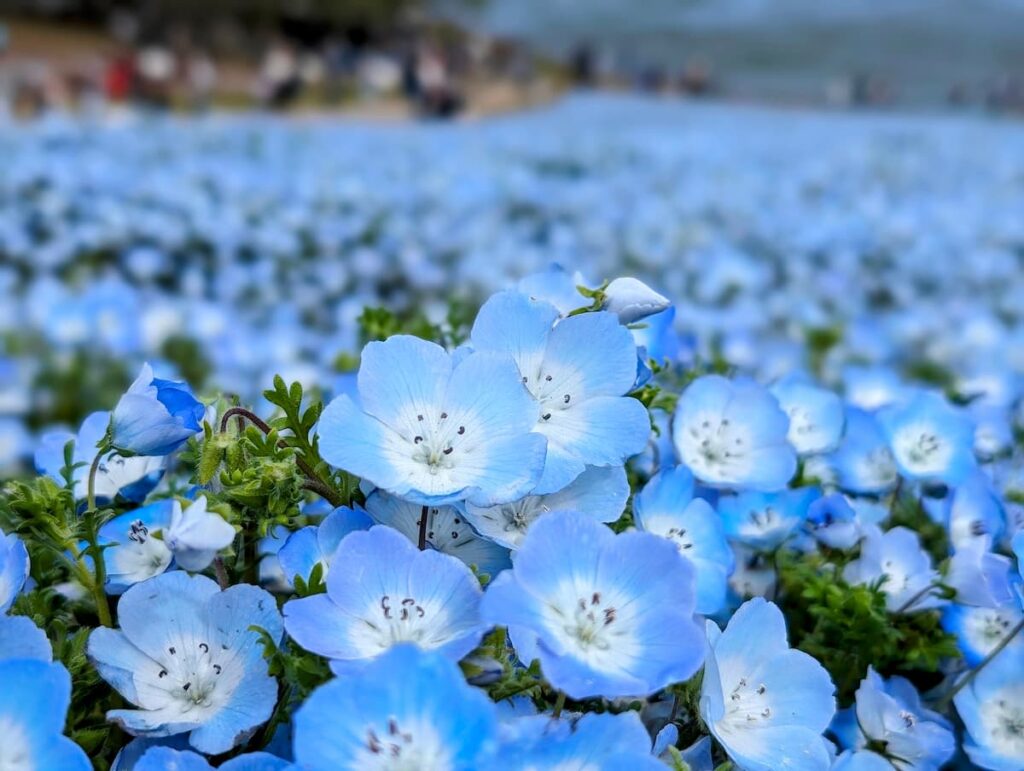
National Hitachi Seaside Park information
Operation hours and how to go
There are two ways to get to Hitachi Seaside Park: by public transportation or by car, so please refer to the website and consider how to get there.
The day I went to see the flowers was when they were in full bloom, so I drove there as soon as the park opened, but even then it took more than an hour to get into the parking lot due to traffic congestion. The opening time that day was 7:00 a.m. The opening time changes depending on the day you go, so be sure to check the website carefully before making your decision.
Incidentally, there are three parking lots, but the one closest to Miharashi Hill, the site of the nemophila, is the West Parking Lot.
Entrance fee
In addition to the entrance fee, there is a seasonal fee that is added to the entrance fee.
The seasonal fee is 350 yen, but it is only charged from early April to early May during the Nemophila season in spring and in October during the Kochia season in fall.
The only year-round fee is the admission fee, which is as follows. Junior high school students and younger are admitted free of charge.
| Age | 1 day | 2 days pass |
|---|---|---|
| Adule(15 years old above) | 450 yen | 500 yen |
| Silver(65 years old above) | 290yen | 250 yen |
Parking fee is 600 yen/day for standard vehicles, and credit card payment is available in the west and south parking lots.
Spectacular scenery Blue road to see Nemophila
To see the famous nemophila, you must go to the Miharashi Hill. If you enter through the west gate, you can go either left or right around the lake in front of you. If you arrive early in the morning, it is recommended that you go right to see the tulips first, which are in full bloom at this time of the year.
Nemophila is always crowded no matter what time of day you arrive, but tulips are much easier to take pictures of early in the day because they are much quieter.
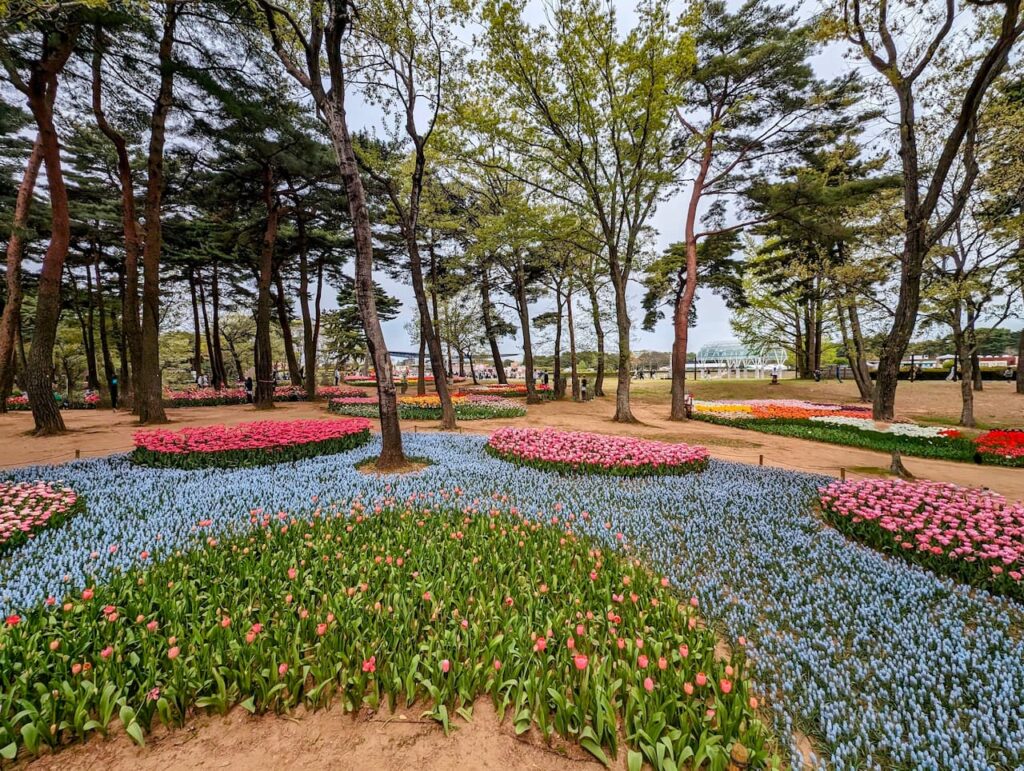
A five-minute walk from the tulip area takes you to Miharashi Hill. Indeed, if you climb to the top of the hill, you can see the blue nemophilas all over the hill. Unfortunately, it was cloudy on this day, but sometimes the sun shone and we could see the blue color. Although this article is only focused on the nemophila, the Ferris wheel in the photo is accompanied by an amusement park, so if you come with your family, you can spend a whole day here.
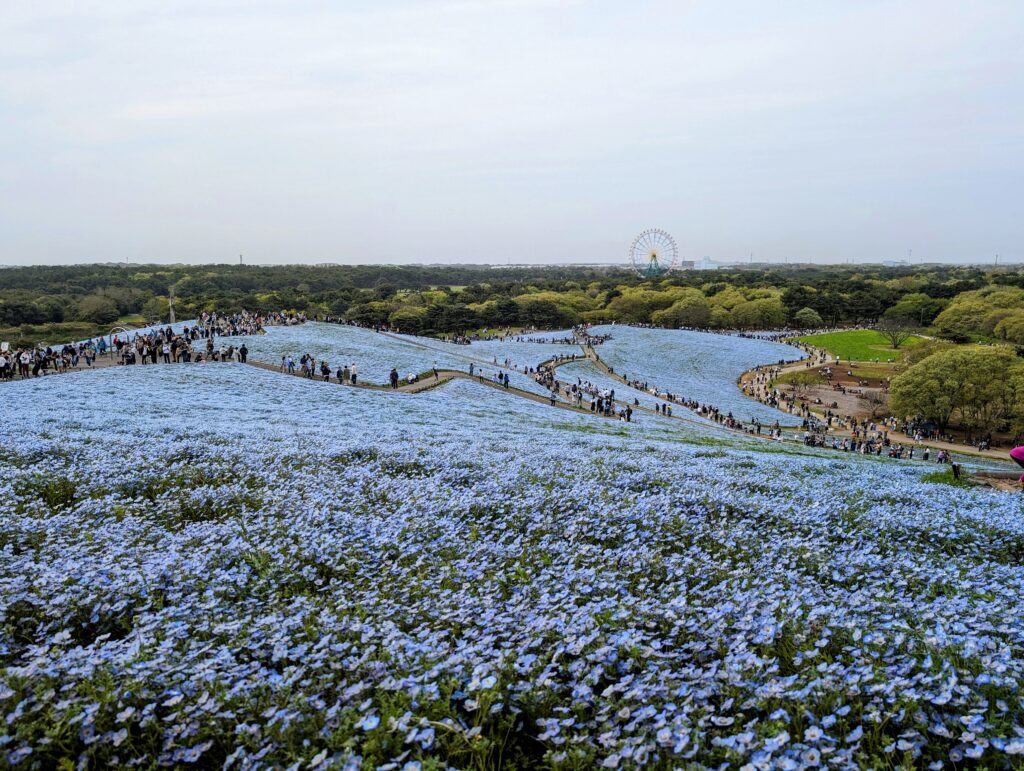
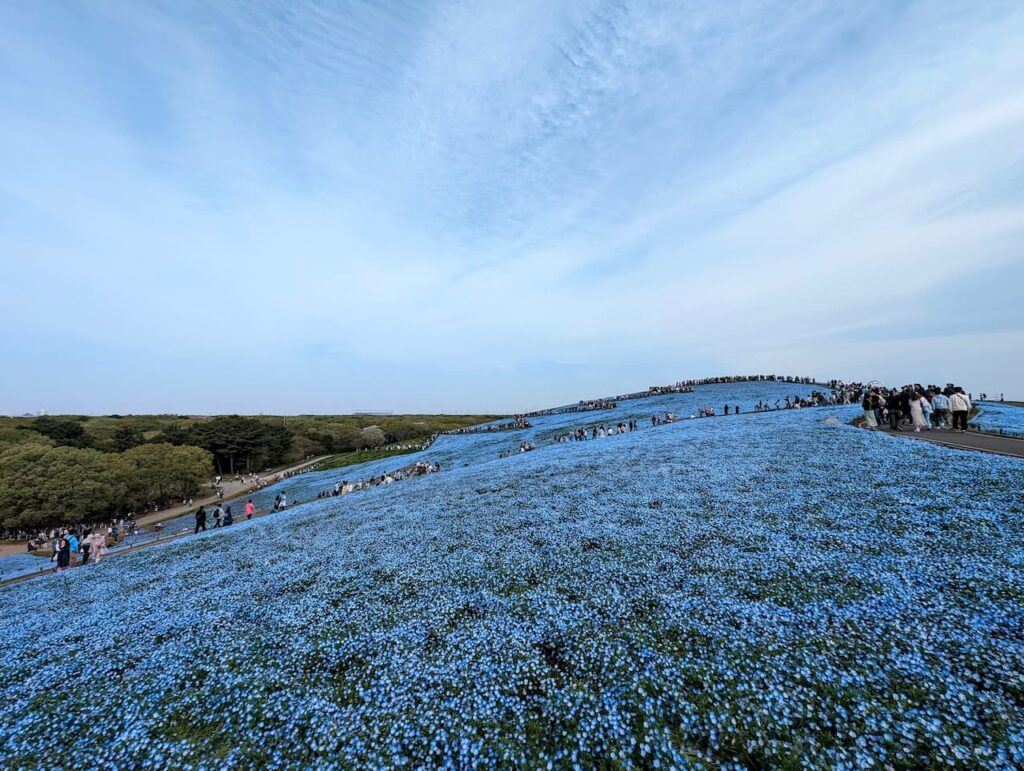
It was nice to see a view that lived up to its name, the Blue Way. If you look at the opposite side of the Ferris wheel from the hill of sight, you can see the ocean. If it had been a clear day, I could have taken a picture of nemophila and the sea, which would have emphasized the “blue” of the scenery.
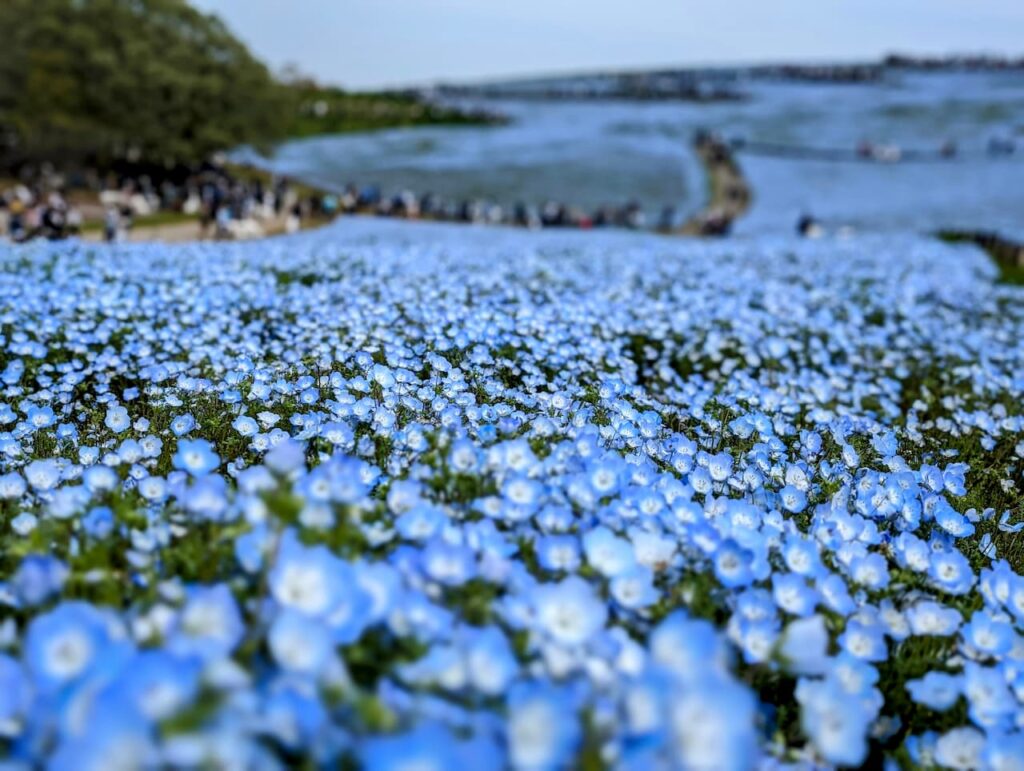
I took pictures from various angles, but I personally like this one the best! I personally like this one because I think it is the one that best fits the phrase “the blue road!
The famous Nemophila soft serve ice cream and Nemophila ice cream are available for dessert near the hill where you can see the view, but there was a long queue, so I gave up. Instead, I drank a cup of Nemophila Blue Tea.
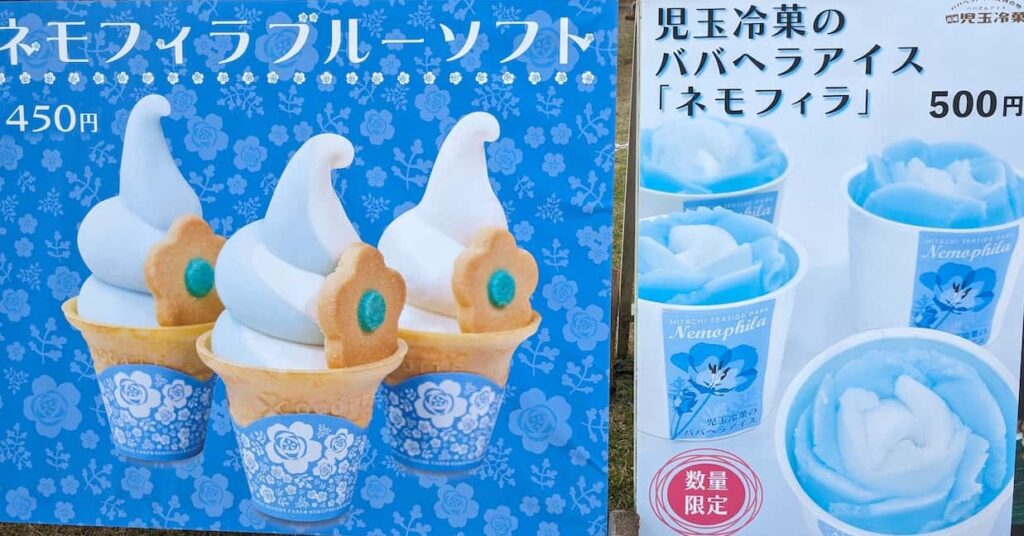
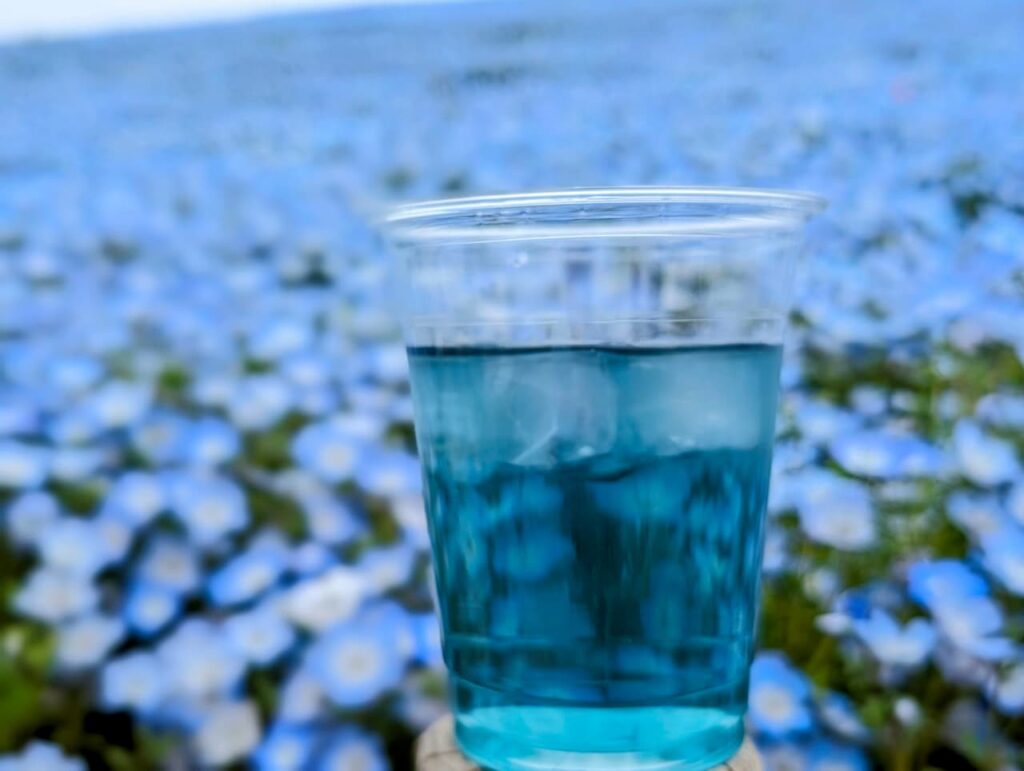
It was a blue herb tea with lemongrass with butterfly peas for 500 yen. The taste,,,, you’ll have to guess.
If you have time, you can enjoy Ibaraki gourmet food at the food stalls near the Miharashi Hill and near the West Gate. You can eat local gourmet foods such as Hitachiniku beef and Nakaminato yakisoba.
Ibaraki Gourmet Information
Ibaraki Prefecture is famous for its Hitachiniku beef. After doing some research, I found that Restaurant Carrots was a famous restaurant where you can eat Hitachiniku beef, so I went there.
Unfortunately, the restaurant was full of reservations, and even take-out was available only in the evening, so we had to give up. Unfortunately, the restaurant was full of reservations, so even take-out was not available because we had to pick it up in the evening.
When I was about to give up and head home, I found a restaurant nearby that served Okkuji Shamo-don, an Ibaraki gourmet dish, so I quickly entered the restaurant.
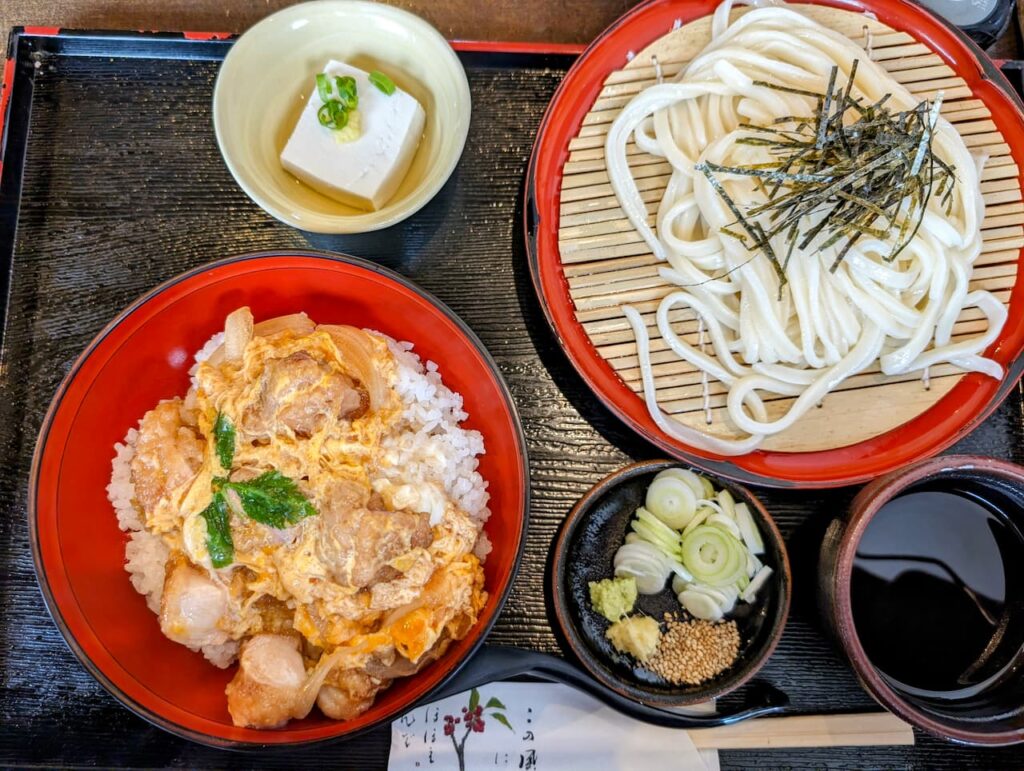
I ordered the Zaru Okuji Shamo-don (1,350 yen). The origin of the Shamo is Thailand, but in Ibaraki Prefecture, the Shamo is raised in a unique way and promoted as one of the best local chicken brands in the country.
It was the first time for me to eat shamo meat, and the juicy lean meat with just the right amount of elasticity and oil was very satisfying and very tasty. The udon noodles were as firm as Sanuki udon, as the restaurant specializes in udon noodles.
We hope this will be a good reference for your gourmet experience in Ibaraki Prefecture.
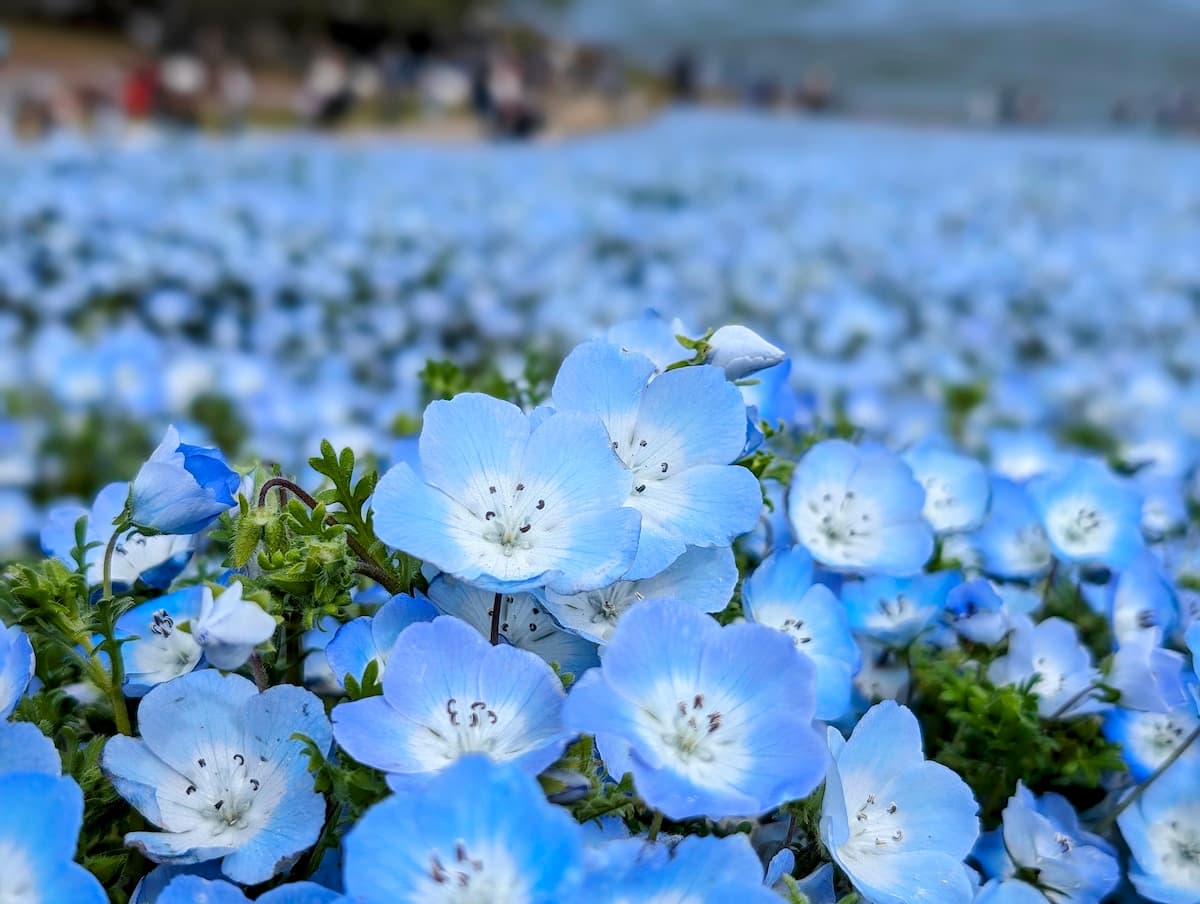
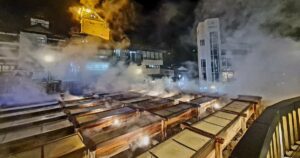
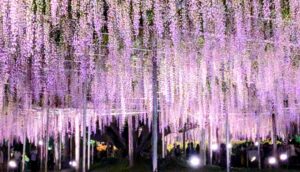
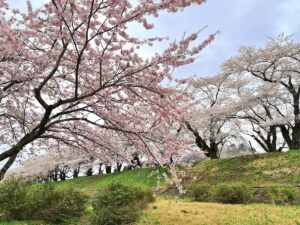

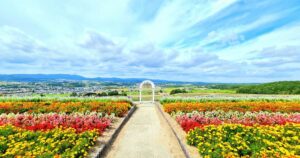
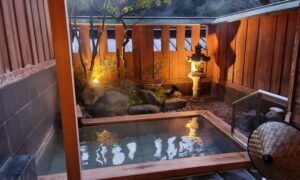
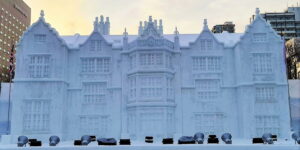
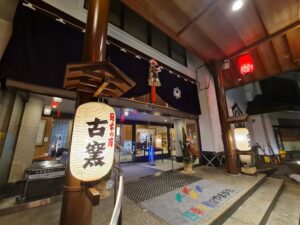
Comments